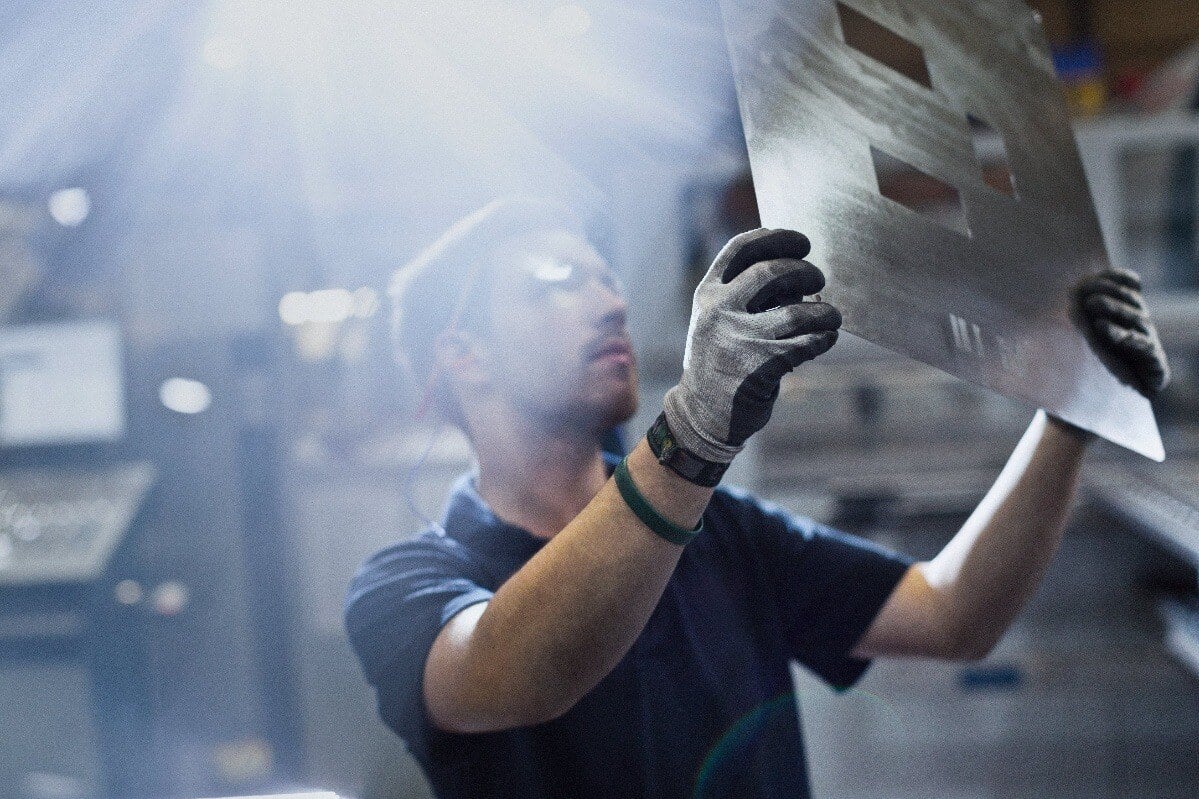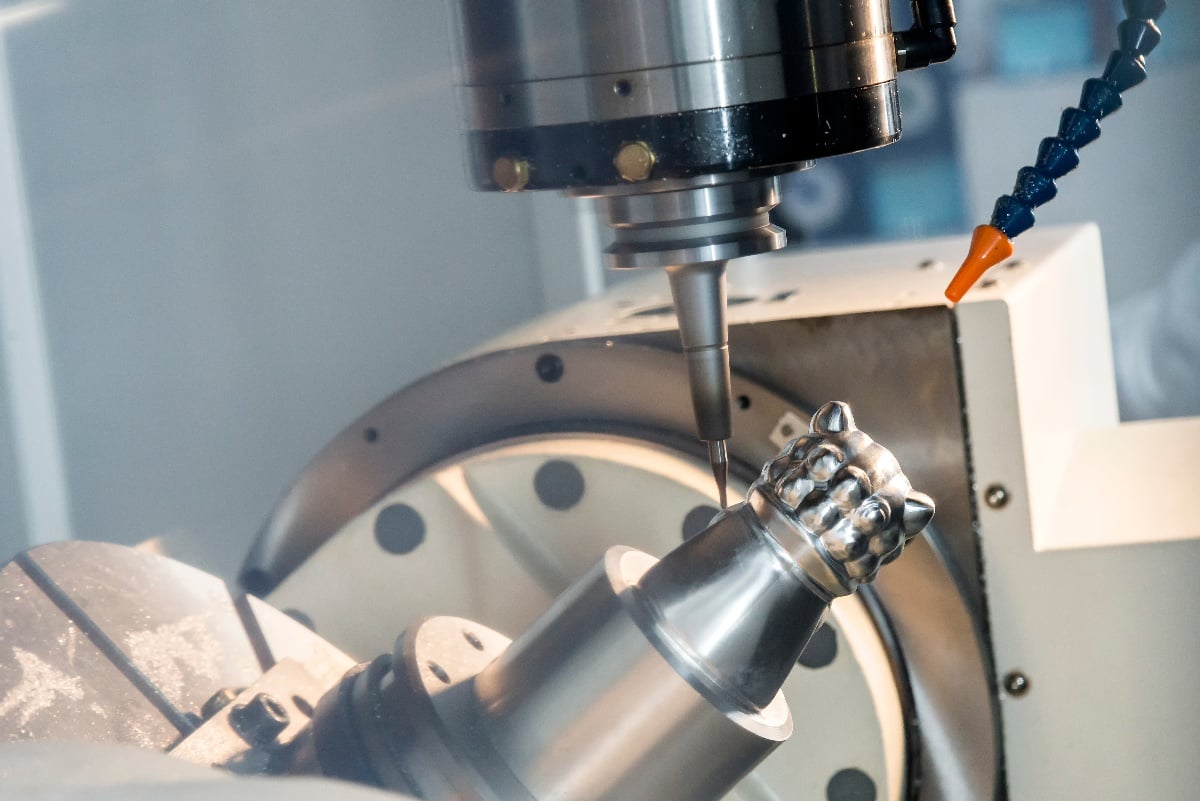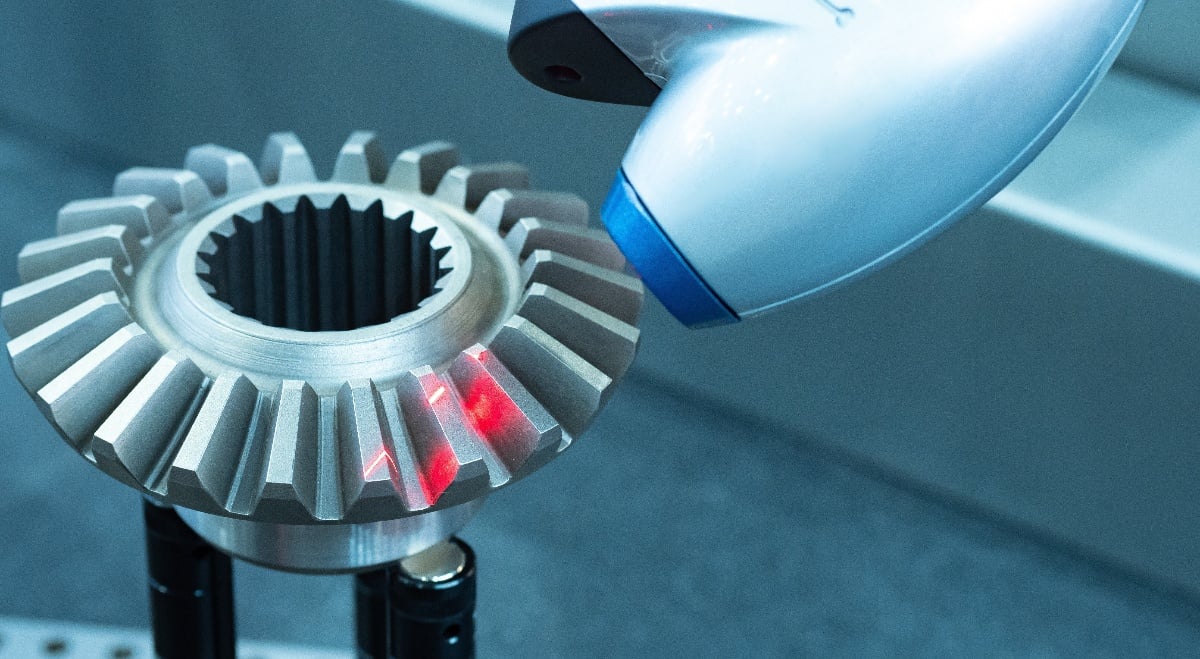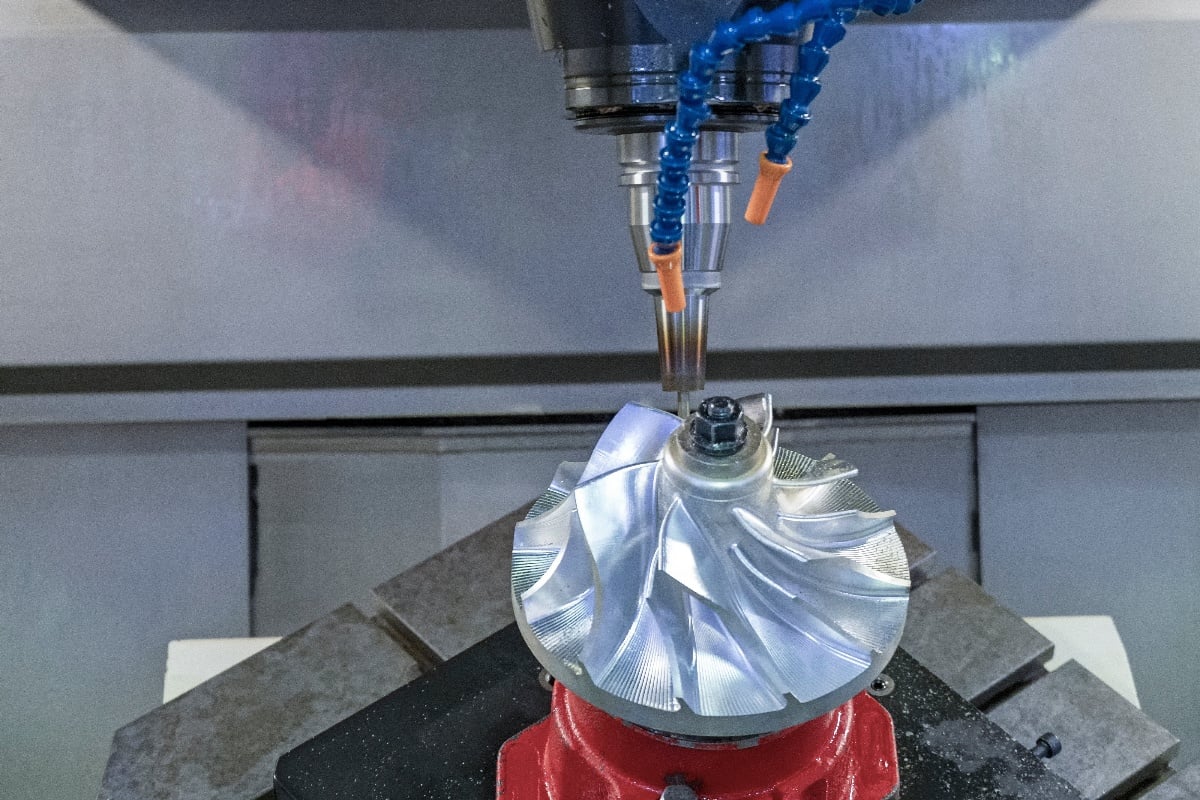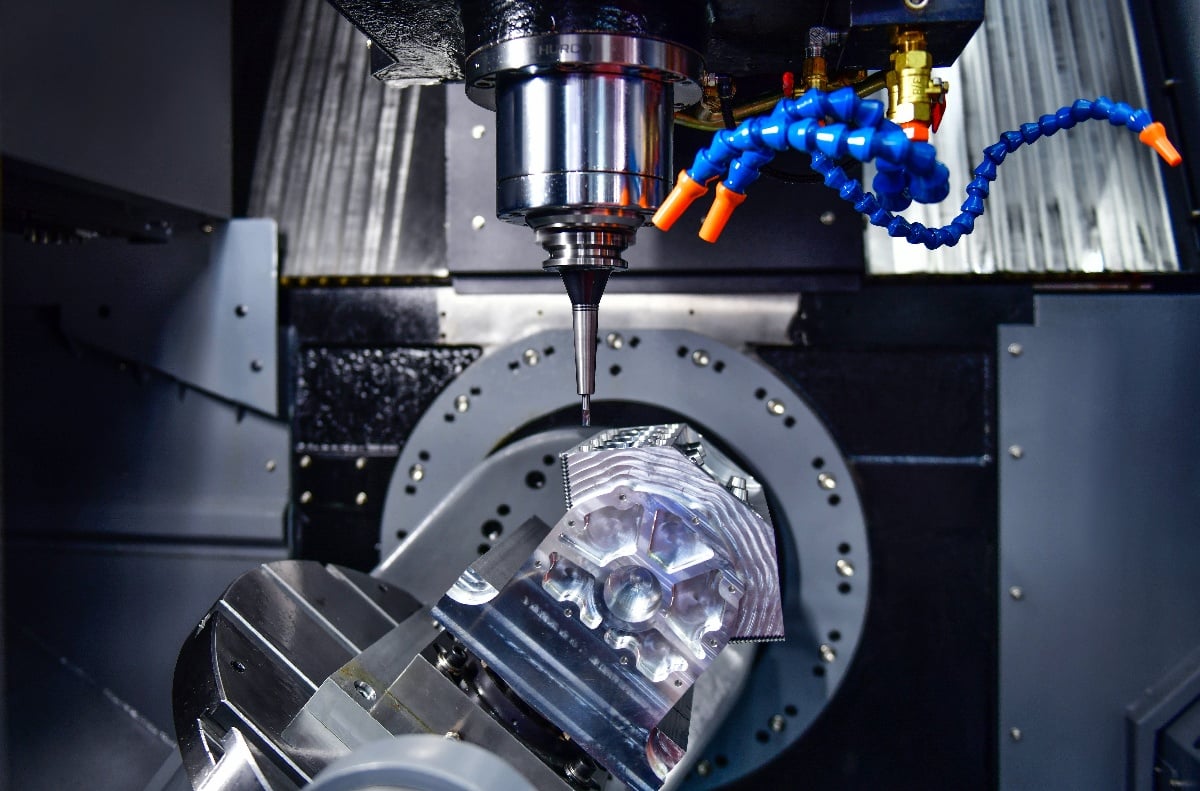“5-Axis Machining” refers to CNC machining operations in which the workpiece or machine tool moves along five axes simultaneously. This advanced machining technique allows manufacturers to produce parts with more complex designs at faster speeds and higher quantities with little additional processing.
5-Axis CNC machines move linearly along the XYZ axes and rotate along two of them. They employ several different axes configurations to perform machining operations, including:
- Head/Head. The table remains stationary while the swivel head rotates along both additional axes.
- Table/Head. The table and the swivel head both rotate along one of the additional axes.
- Table/Table. The table contains both rotational axes while the swivel head moves along the XYZ axes.
There are three possible axes of rotation (A, B, and C, corresponding to rotation about the X, Y, and Z axes, respectively), and 5-axis machines can be further defined by which two axes are being used. For example:
- Double Swivel Head. The swivel head rotates along the A and C axes.
- Droop Swivel Head. The swivel head rotates along the B and C axes.
- Double Swivel Table. The table rotates along the A and C axes.
- Droop Table. The table rotates along the B and C axes.
- One Swing, One Rotate. The swivel head rotates along one axis while the table rotates along another (often A and C, respectively).
APPLICATIONS OF 5-AXIS MACHINING AND INDUSTRIES SERVED
5-axis machining serves a wide range of purpose across multiple industries, especially in applications that require parts with complex geometries and tight tolerances. Some of the industries that commonly employ 5-axis machining include:
1. Aerospace. 5-Axis machining produces highly complex, precision parts, often a bare-minimum requirement for Aerospace. Typical products produced through this technique include turbine blades and valves.
2. Automotive. The automotive industry often requires components with unique shapes and tight tolerance requirements and automotive parts—such as housings, caps, and engine parts—are usually produced in high volumes.
3. Medical. In the medical industry, components must meet strict standards for quality and accuracy, as even the slightest error in a part could put patients at risk. The precision capabilities of the 5-axis machining process make it well-suited for medical parts and products. Examples are machined parts in scanning equipment, surgical tools, or implants.
4. Energy. The energy industry also demands unusual shapes for various generation and containment devices.
5. General industrial. For general industrial applications, manufacturers use 5-axis machining to produce standard and custom parts and products, including tools and mechanical components.
WHAT MATERIALS ARE USED?
In general, CNC machining processes handle a diverse range of materials with ease. The 5-axis machining process is no exception. Some of the typical materials used in 5-axis machining operations include:
- Aluminum
- Copper and copper alloys
- Plastics
- Refractory alloys
- Stainless steel
- Titanium
- Tungsten
KEY BENEFITS OF 5-AXIS MACHINING
1. Greater part design flexibility. The additional axes of motion produce more complex and intricate parts. Some manufacturing processes with fewer axes may require more tooling or equipment adjustments to produce the same parts, while others cannot recreate them.
2. Lower labor costs. With a lower requirement for adjustments, 5-axis machining operations require little to no operator involvement; this reduces the cost of labor per part.
4. Quicker lead times. A 5-axis machine produces a component faster than its 3-axis or 4-axis counterparts, reducing lead time across the board.
Even 3+2 machining, which involves fixing the workpiece in a rotated configuration, offers many of the same benefits for simpler components.
Other advantages of both processes include:
- Efficient use of floor space
- Superior collision avoidance
- Integrated hole drilling capabilities
- Simple machine setup
- Reduced tool wear leading to longer working life
CHOOSE PRO-TYPE INDUSTRIES FOR 5-AXIS MACHINING
Compared to other manufacturing methods, such as 3D printing or 3-axis CNC machining, 5-axis machining offers faster lead times, greater precision and accuracy, and broader design flexibility.
Pro-Type Industries offers advanced CNC machining capabilities for a variety of materials, including standard metals, exotic metals, and more. Our clientele spans a large range of industries including aerospace, chemical, electronic, marine, medical, and the U.S. Military.
To learn more about our CNC machining capabilities, including 5-axis machining, or to request a quote for your next project, contact our team today.

